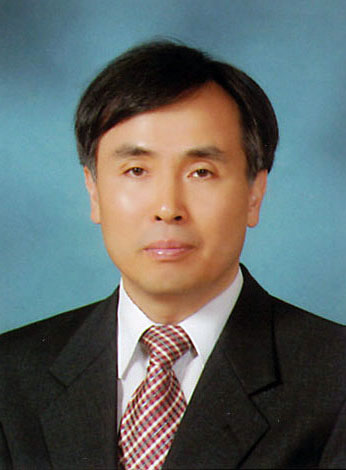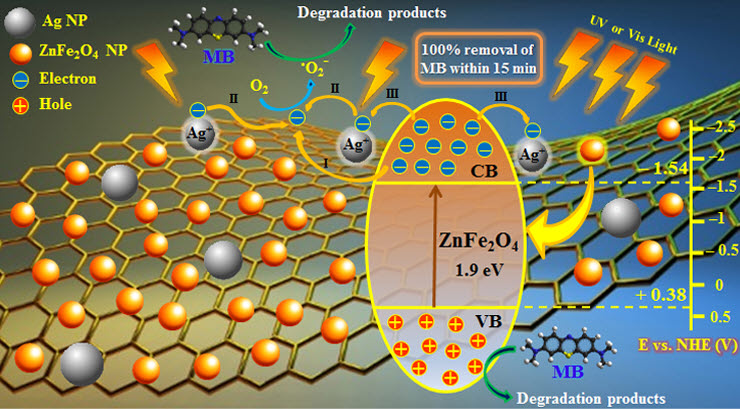Professor Shim Jae-jin Research Team Develops Groundbreaking Waste Water Treatment Nano-catalyst N
No.88929- Writer pr
- Date : 2017.01.11 15:39
- Views : 8427
Significantly lowers decomposing time compared to other catalysts and can decompose with visible raysCan be used repeatedly on difficult-to-decompose waste water treatment and industrial economic effects expected
Receiving attention as results of joint research by Korean-Egyptian scientist
[January 9, 2017]
Receiving attention as results of joint research by Korean-Egyptian scientist
[January 9, 2017]
A new path will be opened for the hard-to-decompose waste water treatment industry.

YU Professor Shim Jae-jin's research team successfully developed a nano-structure catalyst without using oxidants and that is recyclable that can decompose over 99% within 30 minutes in both UV rays and visible rays. It is expected to provide epochal contribution in relevant industries in the future.
Existing catalysis had problems such as being able to decompose only in UV rays but having difficulties in visible rays, requiring long decomposition time, and having low recycling rates of catalysts. In order to address the weaknesses of such catalysts, Professor Shim's research team successfully developed a catalyst using microwaves that can decompose organic tints even in visible rays by purely synthesizing with graphene-supported silver zinc/iron oxidant nano-complexes.
Thde developed catalyst uses microwaves and is a hybrid nano-complex catalyst that applied silver-nanoparticles (10-20nm) and zinc/iron oxidant particles (30-40 nm) using a single self-assembly reaction, and it has a structure with excellent catalyst performance for easy optical pumping electronic-single pair separation and electronic delivery. This catalyst prevents combination of zinc/iron oxidant nanoparticles through interaction with graphene and it has a large surface area (BET surface area 179 m2/g, stoma size 3.6 nm), and can be used in both UV rays and visible rays. Furthermore, the decomposition time is short at 30 minutes and it does not use oxidants (hydrogen peroxide, peroxosulfuric acid, etc.). Furthermore, it not only improves the decomposition efficiency by 100-300% compared to past research, but the catalyst also has magnetic properties, making it easy to recover after use, and the after five uses, the photocatalyst reduction is less than 3%, thus exhibiting significantly high recycling rates.
Thde developed catalyst uses microwaves and is a hybrid nano-complex catalyst that applied silver-nanoparticles (10-20nm) and zinc/iron oxidant particles (30-40 nm) using a single self-assembly reaction, and it has a structure with excellent catalyst performance for easy optical pumping electronic-single pair separation and electronic delivery. This catalyst prevents combination of zinc/iron oxidant nanoparticles through interaction with graphene and it has a large surface area (BET surface area 179 m2/g, stoma size 3.6 nm), and can be used in both UV rays and visible rays. Furthermore, the decomposition time is short at 30 minutes and it does not use oxidants (hydrogen peroxide, peroxosulfuric acid, etc.). Furthermore, it not only improves the decomposition efficiency by 100-300% compared to past research, but the catalyst also has magnetic properties, making it easy to recover after use, and the after five uses, the photocatalyst reduction is less than 3%, thus exhibiting significantly high recycling rates.

Professor Shim, the principal researcher of this study, said, "The graphene-metal oxidant nano complex that we developed can decompose wastes that are hard to decompose, and it also does not use chemical oxidants, can be used repeatedly, and has hhigh re-use efficiency and short decomposition time. Therefore, it is expected to contribute considerably to industries in the future." He added, "We will continue our research to develop high performing graphene-metal oxidant nano-complex materials by using clean catalysts so that it can be used for energy storing (super capacitors), optical catalysts, chemical sensors, and anti-bacterial bio materials."
This study was joined by Dr. Amr Hussein Mady Hussein, a senior researcher in the national oil research center of Egypt, Professor Marjorie Lara Baynosa (PhD at YU) of the University of the Philippines, and Dr. Dirk Tuma of Germany's BAM Federal Materials Testing Center as part of the emerging nation support project (inviting foreign scientists and technicians to Korea) overseen by the National Research Foundation. The research results were included in <Applied Catalysis B: Environmental> citation index 8.328, top percentile 0%) online issue (October 2016) and will be published in an academic journal in April.
In the past three years, Professor Shim published 68 nano-material related papers in SCI journals. The excellence of his papers were recognize (h-index 22) by being published in major journals such as <Journal of Power Sources> (2015, citation index 6.333, top percentile 3.7%), <ACS Sustainable Chemistry & Engineering> (October 2016 online issue, citation index 5.267, top 5.92%), <Sensors and Actuators B: Chemical> (2015-2016, 4 papers (including online), citation index 4.758, top percentile 1.78%). Furthermore, based on the research outcomes, he registered 14 patents and is very active as plenary, keynote and invited speakers in over 20 international academic conferences. He has served as the chairman of the Korean Society of Clean Energy (2012) and vice-chairman of the Korean Society for Engineering Education, and is currently working as the YU Industry-Academic Cooperation Team's Clean Energy Research Center Project Leader and the Clean Technology Research Center Director.
In the past three years, Professor Shim published 68 nano-material related papers in SCI journals. The excellence of his papers were recognize (h-index 22) by being published in major journals such as <Journal of Power Sources> (2015, citation index 6.333, top percentile 3.7%), <ACS Sustainable Chemistry & Engineering> (October 2016 online issue, citation index 5.267, top 5.92%), <Sensors and Actuators B: Chemical> (2015-2016, 4 papers (including online), citation index 4.758, top percentile 1.78%). Furthermore, based on the research outcomes, he registered 14 patents and is very active as plenary, keynote and invited speakers in over 20 international academic conferences. He has served as the chairman of the Korean Society of Clean Energy (2012) and vice-chairman of the Korean Society for Engineering Education, and is currently working as the YU Industry-Academic Cooperation Team's Clean Energy Research Center Project Leader and the Clean Technology Research Center Director.